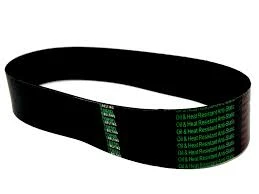- Arabic
- French
- Russian
- Spanish
- Portuguese
- Turkish
- Armenian
- English
- Albanian
- Amharic
- Azerbaijani
- Basque
- Belarusian
- Bengali
- Bosnian
- Bulgarian
- Catalan
- Cebuano
- Corsican
- Croatian
- Czech
- Danish
- Dutch
- Afrikaans
- Esperanto
- Estonian
- Finnish
- Frisian
- Galician
- Georgian
- German
- Greek
- Gujarati
- Haitian Creole
- hausa
- hawaiian
- Hebrew
- Hindi
- Miao
- Hungarian
- Icelandic
- igbo
- Indonesian
- irish
- Italian
- Japanese
- Javanese
- Kannada
- kazakh
- Khmer
- Rwandese
- Korean
- Kurdish
- Kyrgyz
- Lao
- Latin
- Latvian
- Lithuanian
- Luxembourgish
- Macedonian
- Malgashi
- Malay
- Malayalam
- Maltese
- Maori
- Marathi
- Mongolian
- Myanmar
- Nepali
- Norwegian
- Norwegian
- Occitan
- Pashto
- Persian
- Polish
- Punjabi
- Romanian
- Samoan
- Scottish Gaelic
- Serbian
- Sesotho
- Shona
- Sindhi
- Sinhala
- Slovak
- Slovenian
- Somali
- Sundanese
- Swahili
- Swedish
- Tagalog
- Tajik
- Tamil
- Tatar
- Telugu
- Thai
- Turkmen
- Ukrainian
- Urdu
- Uighur
- Uzbek
- Vietnamese
- Welsh
- Bantu
- Yiddish
- Yoruba
- Zulu
Aug . 02, 2024 14:36 Back to list
Understanding the Benefits and Applications of Poly V Belts in Modern Machinery and Equipment
Understanding Poly V Belts The Key to Efficient Power Transmission
Poly V belts, also known as serpentine belts or multiple V-belts, play a crucial role in the mechanical world, particularly in automotive and industrial applications. These belts are designed to optimize power transmission between various components, such as engines, alternators, air conditioning compressors, and other accessories. With their unique design and functional attributes, Poly V belts have become indispensable for efficient performance in modern machinery.
The Design and Structure
Poly V belts stand out due to their multi-ribbed design, which allows for greater contact surface area compared to traditional V-belts. This design enables them to transmit more power while maintaining a compact profile. Typically made from high-quality rubber and reinforced with polyester or aramid fibers, Poly V belts are built to withstand high tension, resist wear and tear, and operate effectively in extreme temperatures.
The belt's cross-section resembles a series of 'V' shapes, which helps in maximizing traction and minimizing slippage. This design is especially beneficial for high-speed applications where maintaining synchrony between moving parts is essential. Additionally, the belts are often treated with special coatings to enhance their resistance to oil, heat, and environmental conditions, thereby increasing their lifespan.
Advantages of Poly V Belts
1. Compact Design The multi-ribbed structure allows for a smaller and lighter belt system, making them ideal for space-constrained applications without sacrificing power transmission capability.
2. Efficiency These belts provide high levels of energy transmission efficiency, often leading to enhanced performance of the engine and attached components, thus contributing to better fuel efficiency in vehicles.
poly v belt

3. Low Noise Operation Poly V belts are designed to operate quietly, reducing the overall noise produced by the engine and improving the comfort of the driving experience.
4. Versatility Widely used in automotive applications, Poly V belts are also suitable for various industrial machinery, including conveyor systems, pumps, and fans. Their adaptability makes them a popular choice across different industries.
5. Reduced Maintenance Unlike traditional V-belts that may require frequent adjustments and replacements, Poly V belts typically have a longer lifespan and lower maintenance needs, thus saving time and costs in the long run.
Applications in Automotive and Industry
In the automotive sector, Poly V belts are commonly found in engines that require the power to drive multiple accessories. They are vital in vehicles where reliability and efficiency are paramount. From energizing the alternator that charges the battery to operating the air conditioning compressor, Poly V belts ensure that everything runs smoothly.
In industrial settings, these belts are employed in various machinery requiring power transmission systems, thereby enhancing operational efficiency. Industries such as manufacturing, construction, and distribution rely on these belts to ensure that their machinery operates steadily and reliably.
Conclusion
Poly V belts have revolutionized the way power transmission is facilitated in both automotive and industrial sectors. Their combination of a compact design, high efficiency, versatility, and low noise operation makes them a preferred choice among engineers and manufacturers. As technology continues to advance, the development of Poly V belts is likely to evolve, introducing even more efficient designs and materials that promise to enhance their performance and longevity. Investing in high-quality Poly V belts can lead to significant operational benefits, ensuring that machinery runs at optimal levels while reducing maintenance needs. Whether you are a vehicle owner or a manufacturer, understanding the significance of Poly V belts is essential to optimizing performance and efficiency.
-
High-Quality Tensioner Belt Pulley - Durable & Efficient
NewsAug.03,2025
-
Premium Timing Belt Factory | AI-Optimized Solutions
NewsAug.02,2025
-
Premium Custom V Belts Enhanced with GPT-4 Turbo AI
NewsAug.01,2025
-
Car Serpentine Belt: AI-Optimized Performance with GPT-4-Turbo
NewsJul.31,2025
-
Heat Joining Drive Belt | High-Durability Fusion Solution
NewsJul.31,2025
-
Timing Belt Video Guide: Selection, Design & Quality Insights
NewsJul.30,2025

